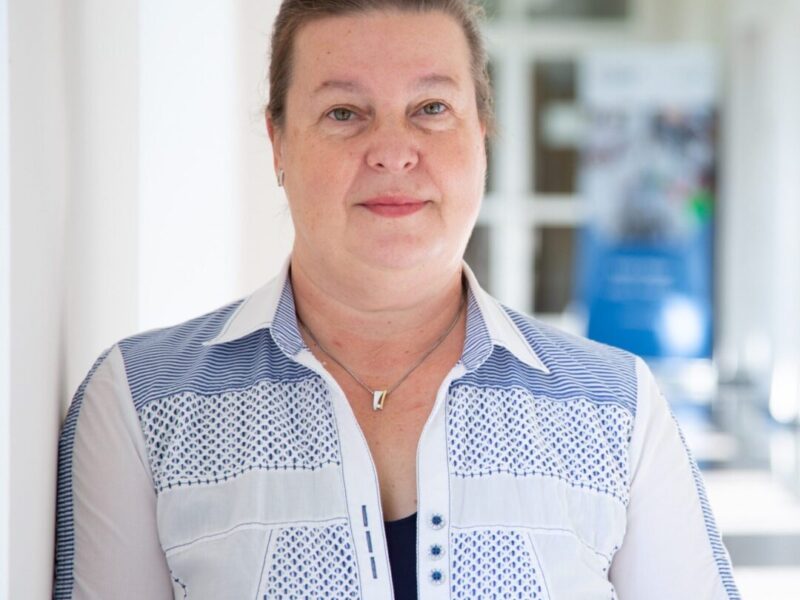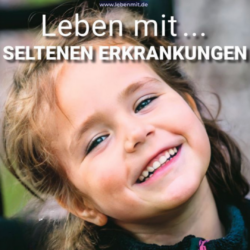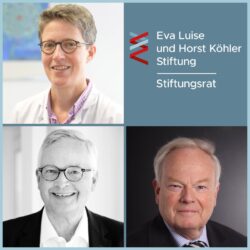Gabriele Müller, Zentrum für Evidenzbasierte Gesundheitsversorgung (ZEGV) Dresden

- Frau Müller, was war Ihre Rolle im Innovationsfondsprojekt TRANSLATE-NAMSE und wie haben Sie die Zusammenarbeit mit den anderen Partnern erlebt?
Wie jedes Innovationsfondsprojekt wurde auch TRANSLATE-NAMSE von externen Instituten evaluiert: In diesem Fall der Berlin School of Public Health (BSPH) und dem Zentrum für evidenzbasierte Gesundheitsversorgung (ZEGV) der TU Dresden, für deren Aufgaben ich mit meiner Kollegin verantwortlich zeichnete. Uns interessierte insbesondere, wie Patient:innen bzw. deren Angehörige die Angebote in TRANSLATE-NAMSE einschätzten. Außerdem haben wir Haus- und KInderärzt:innen über ihre Zusammenarbeit mit Zentren für Seltene Erkrankungen befragt. Und drittens haben wir Daten verschiedener Allgemeiner Ortskrankenkassen (AOK) und der BARMER erhalten, wo wir geschaut haben, welche Versorgungswege Patient:innen durchlaufen haben, bevor sie sich an ein TRANSLATE-NAMSE Zentrum gewandt haben.
Das TRANSLATE-NAMSE Konsortium war mit 19 verschiedenen Partnern recht groß. Dennoch haben wir sehr eng miteinander zusammengearbeitet und die Koordinator:innen und Lots:innen in den Zentren haben uns sehr bei der Evaluation unterstützt.
- Was ist Ihrer Meinung nach das wichtigste Ergebnis des Projekts TRANSLATE-NAMSE?
Es konnte ein strukturelles Problem gelöst werden. Vor TRANSLATE-NAMSE versuchten die einzelnen Universitätskliniken mit mehr oder zumeist weniger eigenen Ressourcen auf Anfragen von Ärzt:innen und Patient:innen einzugehen, die auf der Suche nach einer Diagnose waren. In TRANSLATE-NAMSE wurde ein strukturierter Versorgungspfad etabliert, wie mit derartigen Anfragen umzugehen ist. Zudem wurde definiert, welche Ressourcen dafür erforderlich sind. Auch wenn nicht jede Patientin, jeder Patient oder deren Angehörige diesen Pfad als optimal eingeschätzt haben, so war doch die Mehrzahl von ihnen damit zufrieden und es konnte bei etwa einem Drittel der Patientinnen und Patienten eine Diagnose gestellt werden. Das Spektrum der Diagnosen war dabei sehr breit und etwa ein Viertel dieser Diagnosen wurde nur ein einziges Mal gestellt.
- Was hat sich konkret für Menschen mit Seltenen Erkrankungen durch das Projekt verbessert? Wo liegen weiterhin zentrale Herausforderungen?
Es gibt in den Zentren für seltene Erkrankungen nun zentrale Ansprechpartner, an die sich Ärzt:innen, Patient:innen oder deren Angehörige wenden können, wenn sie auf der Suche nach einer Diagnose sind. In den Zentren wurden Strukturen geschaffen, wie diese Anfragen in einem strukturierten Prozess bearbeitet werden, so dass am Ende möglichst viele Patient:innen eine gesicherte Diagnose erhalten. Die etablierten Strukturen müssen nun eine regelhafte Finanzierung erhalten. Außerdem müssen die zuweisenden Ärzt:innen besser über die Möglichkeiten, die Verfahrensweise und die Zugangswege zu den Zentren informiert werden, so dass sie im Vorfeld mit ihren Patientinnen und Patienten die zeitnahe Einbeziehung der Zentren absprechen können.
- Woran werden Sie zukünftig im Bereich Seltener Erkrankungen arbeiten?
Bereits seit einigen Jahren arbeite ich in der Medizininformatikinitiative daran mit, die Daten für die Forschung nutzbar zu machen, die bei ambulanten oder stationären Vorstellungen von Patient:innen in Universitätskliniken routinemäßig erfasst werden. Da viele Menschen mit Seltenen Erkrankungen aufgrund der spezifischen fachlichen Anforderungen an die Behandlung ganz oder zumindest zu einem guten Teil von Universitätskliniken betreut werden, liegt hier ein riesiger Datenschatz über den Verlauf und die Behandlung Seltener Erkrankungen. Im Projekt CORD-MI werden von 21 Universitätskliniken Strategien erarbeitet, wie diese Daten unter Einhaltung des Datenschutzes analysiert werden können.
Ab kommendem Jahr werde ich zudem mit Forscherinnen und Forschern aus Freiburg Instrumente entwickeln, um das Krankheitsmanagement und die Lebensqualität von Patient:innen mit Multi-Organ-Autoimmunerkrankungen zu verbessern. Hier gibt es bereits seit einigen Jahren das GAIN-Netzwerk, in dem sich Forscher zusammengeschlossen haben, um diese Krankheitsbilder besser zu beforschen. Nun soll die Sicht der Patient:innen stärker in den Fokus rücken.
Hintergrund
Menschen mit einer Seltenen Erkrankung haben oft eine Odyssee von Arztbesuchen und eine Zeit großer Unsicherheit hinter sich, bevor sie und ihre Angehörigen die richtige Diagnose erhalten. Und auch wenn eine Diagnose gestellt werden konnte, ist gute Versorgung häufig nicht gesichert. Um dies zu ändern, wurde 2010 das „Nationale Aktionsbündnis für Menschen mit Seltenen Erkrankungen – NAMSE“ gegründet und ein Nationaler Aktionsplan für Menschen mit Seltene Erkrankungen erarbeitet. Die Umsetzung ausgewählter zentraler Maßnahmen aus diesem Aktionsplan war Inhalt von TRANSLATE-NAMSE – einem dreijährigen Verbundprojekt von neun Zentren für Seltene Erkrankungen in Deutschland und vier humangenetischen Instituten in Kooperation mit zwei Konsortialkrankenkassen sowie der Allianz Chronisch Seltener Erkrankungen (ACHSE) e.V .
Mittlerweile ist TRANSLATE-NAMSE erfolgreich beendet worden. Die Evaluation hat deutliche Verbesserungen für die Patientinnen und Patienten durch die angewandten neuen Versorgungsformen aufgezeigt. Vom Innovationsausschuss beim Gemeinsamen Bundesausschuss (G-BA), dem höchsten Gremium der Selbstverwaltung im Gesundheitswesen Deutschlands, wurde die Überführung der Projektinhalte in die Regelversorgung kürzlich klar befürwortet. Für die Versorgung von Menschen mit Seltenen Erkrankungen stellt diese Entscheidung einen Meilenstein dar. Vor dem Hintergrund schildern Projektverantwortliche von TRANSLATE-NAMSE hier Ihre Erfahrungen und Erwartungen.



